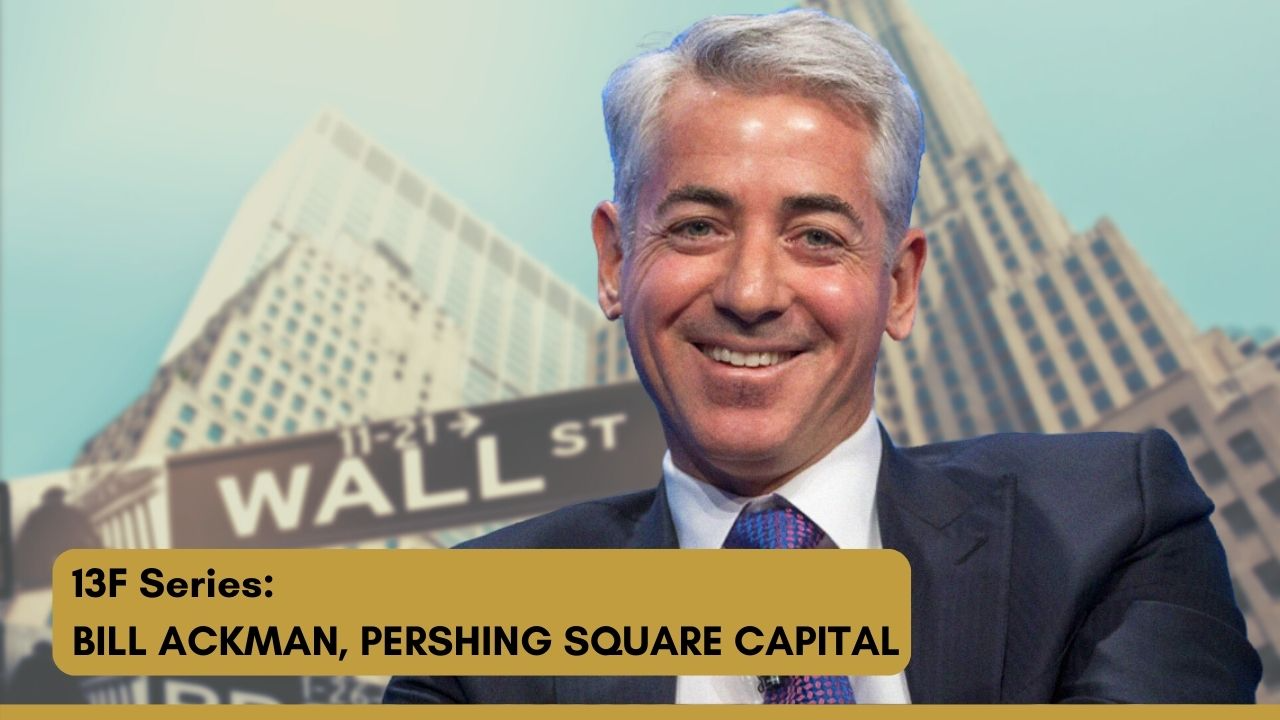The incredible stats that tell the tale of FY22
Well, we made it. What a 12 months it's been on financial markets. It started with global markets closing (ad nauseum, it seemed) at record highs. It ends with fears of a global recession very much at the centre of all discussion.
Here at Livewire, we've been here through it all with you.
Our daily Stats Incredible segment has been one of the ways we've shone a light on this unprecedented time for investors.
Here's a taster of just some of the great stats we've brought you this year:
September 23, 2021: $414 billion: The level of debt on the books of Chinese property developer Evergrande. (The lawsuits, incidentally, are still ongoing and liquidation is not out of the picture.)
November 8, 2021: $39.7 million: The trading value of BetaShares new CRYP ETF in its first day on the ASX. The previous record was broken within 15 minutes of trading. (Talk about coming in at the top of the market!)
February 4, 2022: 55: The number of ASX listings with a market cap over A$20m at IPO in 2021, up 62% from 2020. We wrote about the IPO market - and what happens from here in a recent wire:
.jpg)
And my personal favourite...
November 29, 2021: 48: The number of S&P/ASX 300 companies (at the time) that do not make a dollar of profit. (I wonder what the number is now - and whether any of them are any closer to delisting from the index purely because the hype has passed.)
This is all a long way of saying that it's been an absolutely remarkable 12 months for investors. To celebrate (or commiserate) the end of this unique era in the markets, the team has compiled a list of the best statistics in the topic areas/asset classes they cover.
We start with our very own Glenn Freeman and the ASX 200:
This year was a red-letter year for the ASX 200. The index fell nearly 10% between July 1st and June 30th, 2022. On a percentage basis, it was the worst decline in more than a decade.
If you excluded the energy sector, the declines would be even worse. The ASX energy sector was up 35% in the financial year through early June. Woodside Energy (ASX:WDS) and Beach Energy (ASX:BPT) both had 30%+ gains this financial year. Santos (ASX:STO), in contrast, recorded a down year after all was said and done.
The ASX banking sector finished the year down hard. The sector was weighed down the most by Westpac (ASX:WBC) which had a 22% decline over the year. And for those who hold any of the Big Four, who could forget that two-week decline in June when bank share prices were sold off right across the board.
In the growth end of the market, the ASX all-tech index finished the year down by more than 29%. The declines have been led by such names as Zip (ASX:ZIP), Xero (ASX:XRO), and Seek (ASX:SEK). The outlier has been Wisetech (ASX:WTC) - up a staggering 40% year-on-year.
But one man's trash is another man's treasure. And the other man, in this case, is M&A and private equity activity. The first half of 2022 provided a record half for mergers and acquisitions. Refinitiv data suggests fees alone are up 78% on the prior corresponding period, and deal volume was the highest on record.
Think about it - there is still a $20 billion+ bid on the table from KKR for Ramsay Health Care (ASX:RHC). Canada's Dye and Durham are still hot on the heels of Link Administration (ASX:LNK). And Crown Resorts (ASX:CWN) was delisted after being bought out by Blackstone.
And the most interesting statistic of all? There have been 47 ASX delistings so far this year. (As of writing, there are nearly 2,200 ASX companies.)
The global markets highlight reel:
...is where the numbers really sell themselves.
The S&P 500 was down 21% in the first half - the worst performance for a calendar H1 since 1970.
The NASDAQ 100 was down 30% in the first half - its worst showing since the dot com crash in 2002. Stock specific - Amazon had its worst three months since 2001 while Tesla had its worst quarter ever.
And Netflix has had a half to regret - it's never made up the losses it experienced from its earnings collapse in mid-April. It still expects to lose two million subscribers next quarter - a stat that caused Bill Ackman to drop his high-risk bet on the stock. We wrote about it here:
.jpg)
Even in value markets like the UK, the FTSE 100 still finished 5% lower. Q2 was the first negative quarter for UK stocks since September 2020.
Meantime, Chinese stocks are on the rebound. After bottoming out earlier in the quarter, the CSI 300 has clawed its losses back to single digits. Alibaba shares are inching closer to a positive year-to-date print, while rival Tencent continues to remain in the doldrums.
The big picture's best of has a 1998 feel:
For this section, I feel it's best we start off with a chart (I promise we'll return to statistics shortly.)

Or to put it another way - Morningstar suggests that this half was just the second time in 40 years that bonds and stocks both posted losses for two consecutive quarters.
Speaking of a rough year for bonds, let's just run through the numbers at the top level:
U.S. Treasuries, which are the global fixed income benchmark, have delivered total year-to-date losses of 11%. That's the worst since - get this - 1788 (per Deutsche Bank's numbers).
German bond yields are down 12.5% and overall euro zone government bond yields put out an even worse performance.
Therefore, it should be no surprise to absolutely anyone that Bloomberg ran this headline.

In central bank land, all roads lead to rate hikes. The RBA, ECB, Federal Reserve, and many others hiked their key interest rates for the first time in more than a decade.
The culprit? Inflation.
Inflation reached 2008 levels in Australia this half. In the US, it's 50-year highs for the headline print and core inflation is still yet to come down markedly. In the UK, the central bank expects inflation to top 10% by the end of the year. And the war in Ukraine means the Eurozone figure is simply a "who knows".
Even South Korea is not immune - inflation there is at its highest since 1998.
So where do you go in times of great difficulty? The ultimate safe haven for one - the US Dollar. The USD Index is up more than 13% over the past year.
The Japanese Yen would also normally be considered a safe haven. However, the Bank of Japan is undertaking yield curve control - a policy that's caused the Yen to be worth the least (against the US Dollar) since - all together now - 1998.
Finally - a quick look at the property space. Purchase prices are going in opposite directions in Australia (Sydney/Melbourne are declining while Brisbane/Adelaide/Perth are rising). This is a story that is very much evolving due to the RBA's pace of rate hikes.
Rents, on the other hand, are on the up and staying there... as this chart from Morgan Stanley explains:

In the UK, it's even worse. London rents are rising at the fastest pace since - here we go again - 1998.
And finally, headwinds for emerging markets caused a couple more 1998-era records to be smashed.
- Turkish inflation is now well past its 1998 highs, and...
- the MSCI EM Index is down the most since 1998
Commodity calls with William Heine:
Despite oil prices falling materially from their March and June peaks, Russian crude oil exports are actually higher now than during the invasion of Ukraine. Why? Kpler data suggests India and China are taking a lot of the new oil (in roubles).
But of course - the commodity price shocks have not been limited to crude oil. Natural gas and wheat futures prices both hit GFC highs during the last year. Since then, both have come down a long way.

Speaking of wheat, if you've ever wanted to know why Ukraine is considered the bread-basket of Europe, consider this:
Ukraine has 18 sea ports bordering the Black Sea and the Sea of Azov. Those 18 ports are where wheat exports usually go through. Unfortunately, all 18 ports have been, and remain closed due to the Russo-Ukrainian war.
And if you want any indicator of what that looks like in graph form - take a look at this one from S&P Global (in turn, reposted by Callum Thomas):

Sounds like we're all going to be paying more for longer. There is one bit of consolation. The peak may very well be in.

The goofy, funny, and eye-watering with Ally Selby:
She calls herself our head of fun - so we tasked Ally with finding the best statistics from the worlds of entertainment and lifestyle business. And she did not disappoint.
Thanks to the fourth and final season of Stranger Things, Kate Bush has made $3.3 million in royalties through the month of June. And that's not even counting the amount of streams it has generated!
Speaking of Netflix, the company allegedly paid out US$320,000 to the fake German heiress Anna Sorokin for the rights to adapt her story into a series. Interestingly, she was jailed after swindling an estimated US$275,000 from hotels, friends, and financial institutions. Oh, the irony.
In other trend-worthy news, 23 million American households adopted a pet during the pandemic (according to the American Society for the Prevention of Cruelty to Animals). Post-acquisition by the New York Times, more than 300,000 people (apparently still) solve a Wordle every day. TikTok has also done the rounds - a rap video featuring Louis Theroux and Duke & Jones of their song “My Money Don’t Jiggle Jiggle, It Folds” has now had close to 36 million views.
Finally, this one from Sara Allen got us chuckling - the most expensive vinyl ever sold was one of the Wu Tang Clan. Price tag? $2 million. I don't get it either.
Looking ahead
As we look ahead to 2022/23, there are many things on the horizon for investors to keep an eye out for. From earnings to central banks, there will be no shortage of risks to watch out for. Then, there's history repeating itself (or at least rhyming, in many cases.) This table from Atchison Investment Research takes a look at FY returns for major investment asset classes over the last 10 years.
The winner for this year won't surprise you but the checkered nature of the board's performance might:

No matter your investment landscape, I think we can all agree that this will be a day-to-day, week-to-week kind of market where anything can happen. I think Morgan Stanley's US research team summed it up best:
The current investment landscape is not unlike driving in torrential rain, during rush hour. As brake lights flash and exits back up, it’s impossible to know whether to stay the course, change lanes or just pull over and wait it out.
Safe driving - and investing.
Never miss an insight
If you're not an existing Livewire subscriber you can sign up to get free access to investment ideas and strategies from Australia's leading investors.
I'll be in charge of asking the questions to Australia's best strategists, economists, and fixed-income fund managers. If you have questions of your own, flick us an email: content@livewiremarkets.com.
3 topics
11 stocks mentioned
5 contributors mentioned

